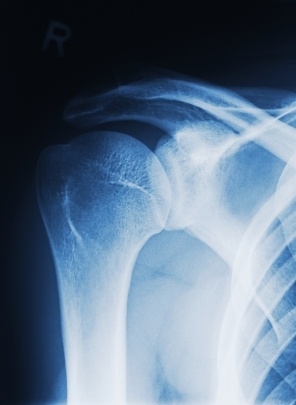|
Shoulder Anatomy
To have a full understanding of shoulder pain, its worth learning about shoulder anatomy. The shoulder joint is one of the versatile and most important joints of our body. It is capable of executing a wide range of movements that is simply not possible in other joints due to its unique anatomy. Surprisingly, with all its possible movements, it remains one of the powerful joints of the body as well, aiding us in throwing, punching, lifting weights as well as the nimble movements required in fine arts. The joint itself includes the collarbone (clavicle), the shoulder blade (scapula), and the upper bone (humerus) of the arm and there are actually two main joints making up the shoulder. One is the typical ball and socket known as the glenohumeral joint, and the other is where the collarbone meets the shoulder blade. There are also ligaments, which attach the bones to each other and then the tendons. Don't let all this shoulder anatomy confuse you. Keep going your doing well! The glenoid cavity and the head of the humerus are covered by articular cartilage. While the cartilage of the humerus head is thick in the center and thin at the periphery, the opposite exists in the glenoid cavity of the scapula, contributing to the dynamics of movement. Moreover, a fibrous cartilaginous structure called the labrum covers the glenoid cavity at its periphery. The bones are held in position by muscles and tendons surrounding them. It wouldn't be worth mentioning shoulder anatomy without mentioning bursae. These are fluid filled sacs that exist in between the shoulder joint and the surrounding processes, notably acromion. They serve to permit free movements and act to cushion the tendons against the bones. The shoulder joint is especially strengthened by a structure called rotator cuff. The tendons of 4 muscles originating from the scapula, the tendons of which fuse together and surround the humeral head, form rotator cuff thereby providing stability to the joint. Now you understand shoulder anatomy, you can understand
shoulder impingement
, which is a correctable syndrome. Correcting it, however, involves rest, reducing the inflammation through anti-inflammatory drugs and osteopathy / physiotherapy. There are also a number of exercises that can assist in helping recovery from shoulder impingement syndrome. The important thing is that as soon as you notice symptoms you contact your doctor and have it checked. This is the best way to prevent a tear or prevent extensive and permanent damage from occurring to the rotator cuff. Those that may be prone to having shoulder impingement syndrome are those that participate in physical activities which require overhead movements. For example people who stack high shelves or those who play golf, tennis, and lift weights.
|




